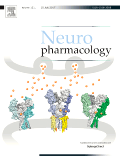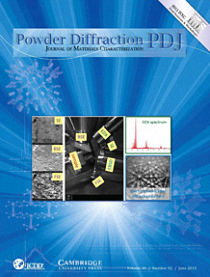All AbMole products are for research use only, cannot be used for human consumption.

Fingolimod (FTY720) HCl is a 1-phospho-neuraminol S1P receptor antagonist with an IC50 of 0.33 nM. , FTY720 can dephosphorylate AMPK by activating PP2A and reduce the expression level of phosphorylated eEF2K, ultimately leading to ADCD and iron death in human multiple myeloma cells.

ACS Appl Mater Interfaces. 2024 Jul 17;16(30):38880-38892.
Immunomodulator-Derived Nanoparticles Induce Neuroprotection and Regulatory T Cell Action to Alleviate Parkinsonism
FTY720 hydrochloride purchased from AbMole

Phytomedicine. 2023 Dec 5.
Huangqi-Guizhi-Wuwu Decoction regulates differentiation of CD4+ T cell and prevents against experimental autoimmune encephalomyelitis progression in mice
FTY720 hydrochloride purchased from AbMole

Am J Chin Med. 2023 Jun 30;44942.
Total Flavonoids of Astragalus Inhibit Activated CD4T Cells and Regulate Differentiation of Th17/Th1/Treg Cells in Experimental Autoimmune Encephalomyelitis Mice by JAK/STAT and NFκ
B Signaling Pathways
FTY720 hydrochloride purchased from AbMole

Signal Transduct Target Ther. 2022 May 17;7(1):159.
Intranasal administration of a recombinant RBD vaccine induces long-term immunity against Omicron-included SARS-CoV-2 variants
FTY720 hydrochloride purchased from AbMole

Eur J Pharmacol. 2022 Sep 15;931:175185.
Anemoside B4 ameliorates experimental autoimmune encephalomyelitis in mice by modulating inflammatory responses and the gut microbiota
FTY720 hydrochloride purchased from AbMole

J Nat Prod. 2020 May 20.
Anti-inflammatory Efficacy of Combined Natural Alkaloid Berberine and S1PR Modulator Fingolimod at Low Doses in Ulcerative Colitis Preclinical Models
FTY720 hydrochloride purchased from AbMole

Pulm Circ. 2020 Feb 10;10(1).
Sphingosine-1-phosphate Receptor-Independent Lung Endothelial Cell Barrier Disruption Induced by FTY720 Regioisomers
FTY720 hydrochloride purchased from AbMole

Neuropharmacology. 2019 Nov 1;158:107701.
FTY720-Mitoxy reduces toxicity associated with MSA-like α-synuclein and oxidative stress by increasing trophic factor expression and myelin protein in OLN-93 oligodendroglia cell cultures.
FTY720 hydrochloride purchased from AbMole

Neuropharmacology. 2017 May 1;117:149-157.
FTY720 (Fingolimod) reverses a-synuclein-induced downregulation of brain-derived neurotrophic factor mRNA in OLN-93 oligodendroglial cells
FTY720 hydrochloride purchased from AbMole

Powder Diffraction. 2015;205-210.
Crystal structure of fingolimod hydrochloride, C19H34ClNO2
FTY720 hydrochloride purchased from AbMole
| Cell Experiment | |
|---|---|
| Cell lines | MCF-7 cells |
| Preparation method | In Vitro Proliferation Assay Cells were seeded onto 96- well plates at the densities of 3000 cells/well. After 24 h of pre-cultivation, appropriate concentrations of the samples were added and the cells were cultured for 2 d. The relative growth ratio was determined by WST-1 assay using a cell counting kit (M4839) according to the manufacturer’s instructions. The IC50 value was determined from the dose response curve. At least three independent experiments were performed. The proliferation assay that tested the effects of DMS was performed using identical methods. Compounds with or without DMS were added to the wells and the plates were incubated for 78 h at 37 °C in a humidified atmosphere containing 5% CO2 before the WST-1 assay was conducted. |
| Concentrations | 0~100µM |
| Incubation time | 2 days |
| Animal Experiment | |
|---|---|
| Animal models | Six-weekold female NOD.Cg-Prkdcscid Il2rgtm1Wjl/SzJ (NSG) mice with Mino cells |
| Formulation | not mentioned |
| Dosages | 10 mg/kg daily for 10 days |
| Administration | intraperitoneal injections |
| Molecular Weight | 343.9 |
| Formula | C19H33NO2.HCl |
| CAS Number | 162359-56-0 |
| Solubility (25°C) | DMSO ≥ 60 mg/mL Water 35 mg/mL |
| Storage |
Powder -20°C 3 years ; 4°C 2 years In solvent -80°C 6 months ; -20°C 1 month |
[1] Cipriani R, et al. J Neuroinflammation. FTY720 attenuates excitotoxicity and neuroinflammation.
| Related S1P Receptor Products |
|---|
| VTX-002
VTX-002 is an orally active, selective S1P receptor 1 modulator for studies related to ulcerative colitis. |
| TRV045
TRV045 is an S1P receptor modulator that can be used in studies related to central nervous system disorders. |
| S1PR1 modulator 1
S1PR1 modulator 1 is a selective S1PR1 inhibitor, with a pIC50 of 7.6, with >40- and >80-fold selectivity, over the other S1PR isoforms S1PR2/3/4. |
| Ozanimod hydrochloride
Ozanimod (RPC-1063) hydrochloride, a sphingosine 1-phosphate (S1P) receptor modulator that binds with high affinity selectively to S1P receptor subtypes 1 (S1P1) and 5 (S1P5). Ozanimod hydrochloride has modulate effect for hS1P1 and hS1P5 receptor with EC50s of 1.03 nM and 8.6 nM, respectively. Ozanimod hydrochloride can be used for the research of relapsing multiple sclerosis (MS) . |
| Icanbelimod
Icanbelimod (S1p receptor agonist 1) is a potent and orally active S1P1 receptor agonist, exhibits an activity of inducing S1P1 internalization (EC50=9.83 nM). Icanbelimod has the potential for the study of arthritis and EAE (experimental autoimmune encephalitis). |
All AbMole products are for research use only, cannot be used for human consumption or veterinary use. We do not provide products or services to individuals. Please comply with the intended use and do not use AbMole products for any other purpose.


Products are for research use only. Not for human use. We do not sell to patients.
© Copyright 2010-2024 AbMole BioScience. All Rights Reserved.
